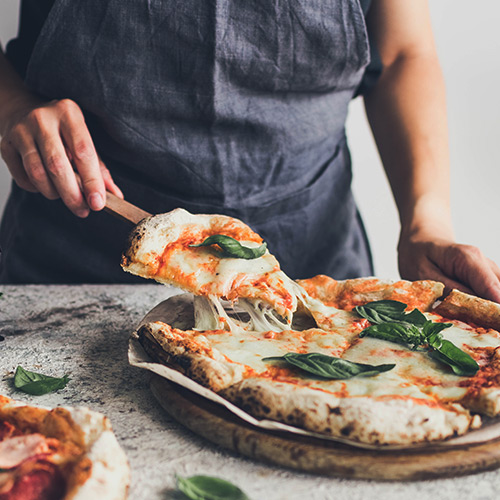
Why Does Food Comfort?
The cast at play in this season of comfort.
Author: be well™ with Big Y® Registered Dietitian Team
Warm apple crisp ala mode, savory, juicy fried chicken, creamy corn chowder or velvety smooth hot chocolate—everyone’s go-to comfort food varies. What is common with all comfort foods, though, is our reaction when eating them: relaxation. Have you ever wondered why?
There are many reasons why you may reach for comfort foods, but let’s focus on what happens when you eat them.
Feel-Good Foods

When you eat, there is an ensemble of enzymes, hormones and neurotransmitters that spring into action. For the sake of simplification, we’ll call these “chemicals.” Depending on what you eat, this matrix of chemicals may be slightly different and thereby create differing feelings in your body.

Think about what happens in your body when you eat your favorite comfort food. Many people experience a wave of contentment and feeling of ease flow over them, like a warm, familiar, comforting blanket. Hence comfort food. How about you?
Foods You Crave to Feel Good

There are many different factors impacting what is considered a comfort food from one person to the next. The one thing comfort foods have in common, though, is flavor. Specifically, flavors we crave to taste.

Research has found eating highly palatable foods, such as those higher in sugar and fat, triggers an internal reward system in the body. Chemicals, such as dopamine and serotonin, are released and we experience pleasurable feelings. These pleasing feelings act like a reward for eating sweet tasting, high-fat foods and your memory notes that this specific food creates a positive experience.¹ Hence why craveable foods may be keeping you coming back for more.
Mindful Munching

As the temperature drops (which impacts appetite too!²) and the harvest of the season brings back memories of warm and cozy gatherings that include baked goods, stews, roasts, casseroles and desserts, notice what you crave for comfort. How often do you reach for your favorite fall-time comfort foods? Those feel-good foods that are also rich in added sugars, fats and calories?

Keep your health and wellness in mind. Handle comfort foods as special treats added to weekly meals versus everyday foods. Having awareness with an empowered mindset is a great way to continue meeting your nutrition goals through the change of seasons and holidays in the weeks ahead.
¹ Erlanson-Albertsson, C. How palatable food disrupts appetite regulation. Basic Clin Pharmacol Toxicol. 2005; 97: 61-73. https://doi.org/10.1111/j.1742-7843.2005.pto_179.x.
² Katz D and Friedman R. Nutrition in Clinical Practice: A Comprehensive Evidence-Based Manual for the Practitioner. 2nd ed. Lippincott Williams & Wilkins 2008.
Published 10/17/2022


